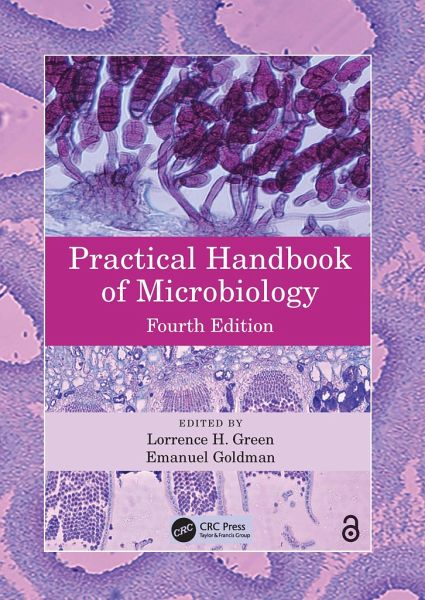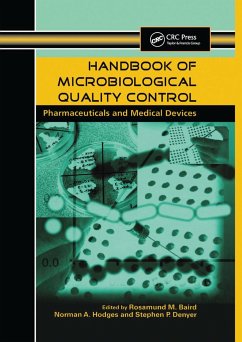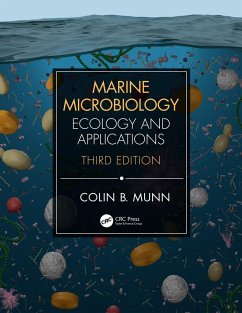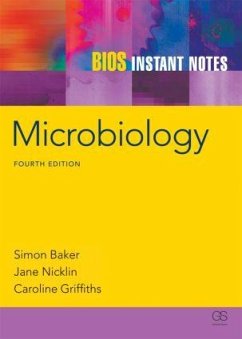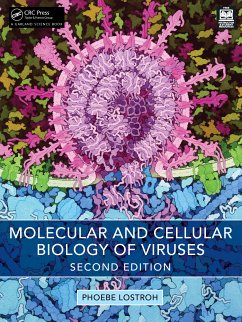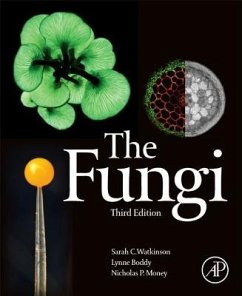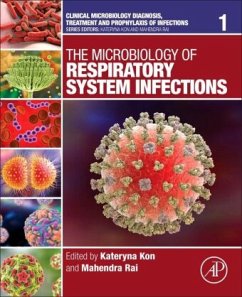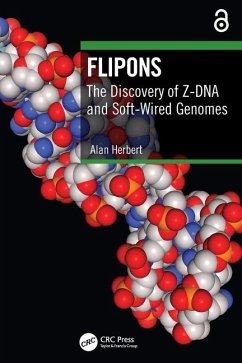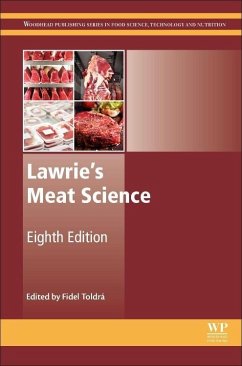Broschiertes Buch
Practical Handbook of Microbiology
Versandkostenfrei!
Versandfertig in 2-4 Wochen
Weitere Ausgaben:

PAYBACK Punkte
54 °P sammeln!




Practical Handbook of Microbiology, 4th edition provides basic, clear and concise knowledge and practical information about working with microorganisms.
Edited by Emanuel Goldman is a professor in the Department of Microbiology, Biochemistry, and Molecular Genetics of the New Jersey Medical School (NJMS), Rutgers Biomedical and Health Sciences (RBHS), a division of Rutgers University, Newark, New Jersey. He graduated with honors from the Bronx High School of Science in 1962, received a BA (cum laude) from Brandeis University in 1966, where he was a chemistry major and music minor, and completed his PhD in biochemistry at the Massachusetts Institute of Technology in 1972. He performed postdoctoral research at Harvard Medical School and at the University of California, Irvine, before joining the faculty of the New Jersey Medical School in 1979, where he rose through the ranks to professor in 1993. Among his awards and honors, Dr. Goldman was a Damon Runyon fellow, a Lievre senior fellow of the California Division, American Cancer Society, and a recipient of the Research Career Development Award from the National Cancer Institute. Among his service activities, he was an officer and organizer of the New York-New Jersey Molecular Biology Club, served as a full member of an American Cancer Society Study Section, and continues to serve on the editorial boards of Protein Expression and Purification and Applied and Environmental Microbiology. He was also twice elected by his colleagues to serve as the president of his university's chapter of the American Association of University Professors, and he was elected to serve as president of the Faculty Organization of NJMS. Among several areas of research activity, he has focused on the role of tRNA in the elongation of bacterial protein synthesis, including uncharged tRNA, codon bias, and programmed translational frameshifts. In addition to numerous scientific peer-reviewed publications and publications in the lay press, he has contributed a chapter to Zubay's Biochemistry textbook and four chapters to the Encyclopedia of Life Sciences. His recently published Comment in Lancet, "Exaggerated risk of transmission of COVID-19 by Fomites", has attracted significant international attention. Lorrence H. Green, Ph.D., President of Westbury Diagnostics, Inc. earned his PhD in Cell and Molecular Biology from Indiana University, Bloomington, Indiana, in 1978. He followed this with three years of recombinant DNA and genetic research at Harvard University. In 1981, he moved into Industry by joining Analytab Products Inc., a major manufacturer of in vitro diagnostic test kits. During the next twelve years he helped to invent and manufacture over 40 diagnostic test kits, and rose to become the Director of New Product Development and Product Support. In 1993, Dr. Green founded Westbury Diagnostics, Inc., a microbiology-biotechnology based contract research and development laboratory also offering consulting services. Mixing his love of business with his love of teaching Dr. Green has served as an adjunct associate professor of microbiology at the NY College of Osteopathic Medicine, and is currently an Adjunct Assistant Professor of Biology at Farmingdale State College and a Director of the Fundamentals of the Bioscience Industry Program at Stony Brook University of the State University of New York. Dr. Green is on the steering committee, and is a former Chairman, of the Microbiology Section of the NY Academy of Sciences. He was also the long time Treasurer of the NYC Branch of the ASM. From 2001 until 2004 he was a member of the Advisory Committee on Emerging Pathogens and Bioterrorism to the New York City Commissioner of Health. In 2013 he was appointed to the Board of Directors of the Long Island Advancement of Small Business. His main interests involve using technology in the development of commercial products and in being an entrepreneur who invests in and develops companies. He enjoys providing mentorship and career advice to students at all levels. He has spoken at many career day events, judged many regional science fairs, and has helped dozens of young people with applications to medical school, nursing school, physician's assistant school, and with starting companies. Most recently he has become involved in government and is currently the Chairman of the Town of Mamakating Planning Board.
Produktdetails
- Verlag: Taylor & Francis Ltd
- 4 ed
- Seitenzahl: 957
- Erscheinungstermin: 31. Mai 2023
- Englisch
- Abmessung: 213mm x 280mm x 51mm
- Gewicht: 2840g
- ISBN-13: 9780367567644
- ISBN-10: 0367567644
- Artikelnr.: 67773349
Herstellerkennzeichnung
Libri GmbH
Europaallee 1
36244 Bad Hersfeld
gpsr@libri.de
Für dieses Produkt wurde noch keine Bewertung abgegeben. Wir würden uns sehr freuen, wenn du die erste Bewertung schreibst!
Eine Bewertung schreiben
Eine Bewertung schreiben
Andere Kunden interessierten sich für



